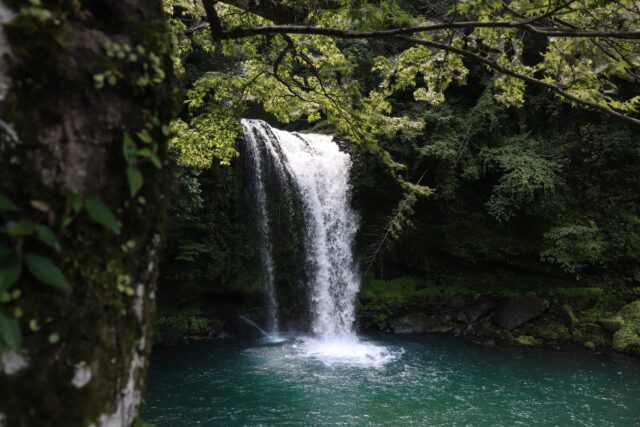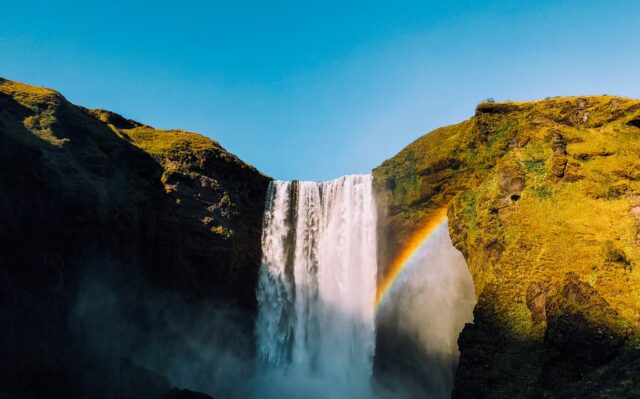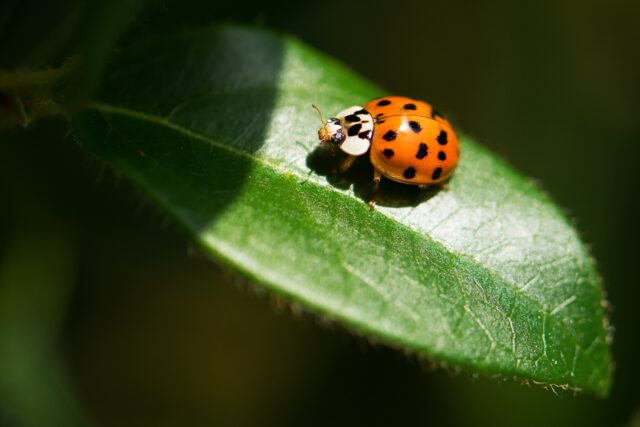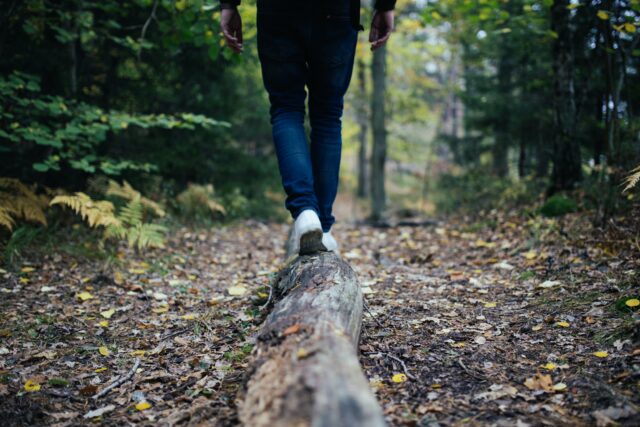Dear Readers,
For the first three years I lived on my land here in rural Hawaii, I didn’t have running water. Instead, I hauled drinking water from a spring in five-gallon jugs, and set out buckets to catch rainwater for washing dishes. This sounds like a hardship, and it was—but the upside of living without running water is that I was forced to walk to a nearby waterfall every day to bathe.
At first, my visits to the waterfall were utilitarian: I was sweaty and needed to rinse off. The water was cold, and I would wade in quickly and get out just as fast. As the days and months went on, however, my relationship to the waterfall changed. I realized that soaking in the cold water reduced the pain in my back after a hard day of work, and sometimes erased it completely. A dip in the waterfall was also extremely effective at resetting my emotions if I was feeling sad, stressed, or overwhelmed.
It wasn’t long before I’d stopped seeing the waterfall as a mere substitute for a hot shower, and begun to see it as a kind of mother, always ready to wrap her cold, wet arms around me whenever I needed a hug. I brought my sorrows to the waterfall, and my joys as well. I never walked past without pausing to say hello and pay my respects, even if I didn’t have time to get in for a swim. Other times, I’d sit on the rocks and utterly lose myself in the sight and sound of the waterfall, enchanted by the sprays of yellow leaves floating down from the trees to land on its surface, the prawns scuttling across its pebbly floor, and the ever-changing tune of its cascade.
Like the heady excitement that goes along with getting to know a new human friend, I found myself wanting to know everything about the waterfall, to catch up with it every day and see what was new. If I went to town for the day, I missed the waterfall and wondered what it was doing. When I got back home, I’d visit as soon as I could, eager to see its latest colors, hear its sounds, and submerge myself in its waters no matter what the weather was like that day.
Two years ago, my next-door neighbor offered to add me to his water line, which is connected to a separate waterfall. I was very appreciative for what was a huge gesture of trust and benevolence in a community in which the most basic comforts are hard-won. I bought some PVC pipe and the strange purple ointment that seals it together, a hose valve and a long green hose, and by the end of the day I had joined the ranks of people with running water. Now, my life was defined by relationships to not one, but two waterfalls: the one which had kept me clean and healthy during my first hard years on the land, and now this second rivulet, which was steeper and more austere, and whose high and rocky pools did not invite swimming.
Befriending this second waterfall was an entirely different matter. Hidden away on the side of a steep and crumbly cliff, guarded by dense thickets of coffee trees and storm-felled Java plums, it was not a place to visit every day. Instead, I bowed to it from a distance, catching sight of its pale white stream high on the cliffside as I walked home after a trip to town. Once, during heavy rainfall, I heard what sounded like a jet engine passing over my land. After a few minutes of baffled searching, I realized it was the waterfall, swollen so much from its usual flow that I could see it from my own front porch, high in the trees like an apparition.
Last month, a friend of mine who is an avid naturalist came to visit me on my land. As we sat on my front porch drinking tea, he continuously expressed curiosity about aspects of the natural world to which I’d never paid much attention. What was that bug doing? What was that bird eating? What kind of insect would hatch out of that foamy green mass of eggs? I felt a mixture of awe and embarrassment as I realized that my friend’s attention was capturing thousands of details that I routinely overlooked. He was loving, noticing, and attending to the animal life of the land, the same way I attended to the waterfalls.
He pointed out a jumping spider on a sugarcane leaf, and we walked over to take a closer look. The spider had a smooth, shiny back and milky aquamarine eyes. My friend explained that he’d once made friends which a jumping spider, and got to know him well over a period of about eight months. Jumping spiders are intelligent, he said—they can recognize individual humans, and even learn tricks. As we stood in the sunlight, admiring the spider, I let this startling fact sink in. The creatures around my home knew and recognized me—were attending to me, in their own particular way. What would happen if I finally started attending to them?
In the days after my friend went home, I found myself seeing and hearing things I’d never seen or heard before. I watched ants crawling on a bright pink ginger blossom, and two cardinals calling to one another across my ‘awa patch. I peered at the small white eggs my friend had discovered in a rolled-up scrap of tarp, wondering when they would hatch. I considered the elegant brown spider on my wall. I realized there was no end to the ways in which I could expand the range and depth of my attention, and in so doing, come into relationship with the whole world, and not only its human residents.
What good does it do to attend to the natural world? Certainly, we can speak of the benefits to ourselves—a sense of peace and health, a heightening of empathy—but does our attention benefit nature? Does a waterfall gain anything from being loved and admired, a jumping spider from being known? Surely, attending to a pine tree won’t stop it from burning in a wildfire, and listening to the minute details of a heron’s footsteps won’t stop the factories whose effluent pollutes the river in which that bird hunts for fish. Is attention merely a feel-good exercise, or is there something more to it?
In the modern world, most of us have been taught to reject anything that isn’t quantifiable. Gazing with love upon a waterfall or a spider doesn’t appear to “do” anything, and as we move out of childhood we learn to give up these pastimes in favor of more “productive” activities. If we care about nature, we sign petitions, organize protests, and campaign for earth-friendly policies—laudable and necessary actions which are the “yang” to attention’s “yin.” When it comes to protecting nature, we rightly put our energy into urgent doing. But I wonder if there is also urgency to the manner of our being—if our local waterways, spiders, and birds would benefit, in some mysterious way, from our stepping back into relationship with them.
Last week, there was a huge storm, and my neighbor and I had to climb up to a high pool of the waterfall to fix our water line, as we often do when the inlet gets blown out. This sounds like a hardship, and it is: the climb is difficult and dangerous. We grab at roots and at frayed scraps of rope, our feet slipping on the crumbly cliffside. My neighbor never fails to point out the spot where another neighbor of ours was killed by a falling rock several years before, as well as the latest landslides and downed trees.
But the upside of this hardship is that I know the water. I’ve seen it running brown and furious, thin and drought-stricken, clear and cold. Not only that, but I know my neighbor: some of our best conversations have taken place as we scrambled up the rocks, stories and confessions pouring out amid commentary about valves, fittings, and basic hydrology. The waterfall binds us to itself and to each other; in our mutual attending, we all become more alive.
It's not every day that we can stop a wildfire, save a coral reef, or make some other concrete “difference”—but no matter where we are, we can elevate our relationships through the quality of our attention. We can be friends to the wind, the water, and the jumping spider, without even knowing what “good” it does. Perhaps there is something more precious to this not-knowing than we will ever realize, and more good than we can ever perceive.
Sincerely,
Hilary Smith
Senior Editor, Hierophant Publishing
Click here to read Hilary's previous essay, "The Downside of 'Having it All.'"



